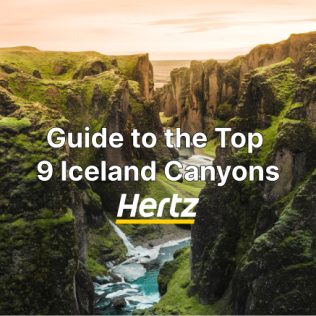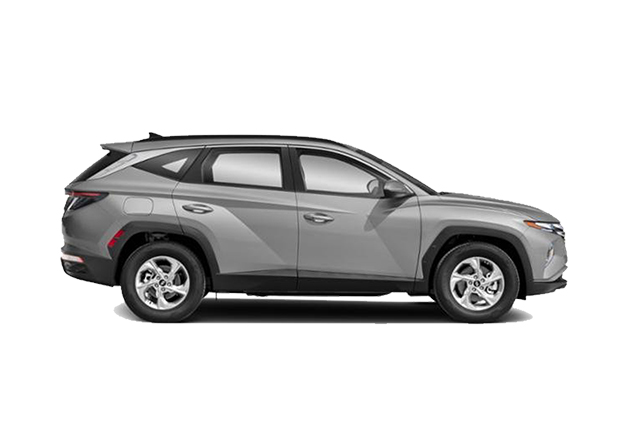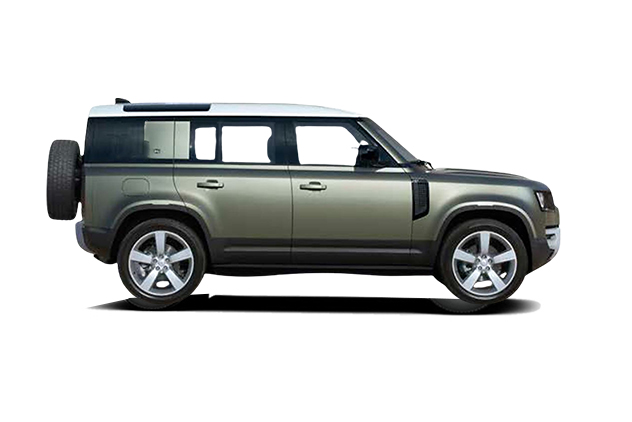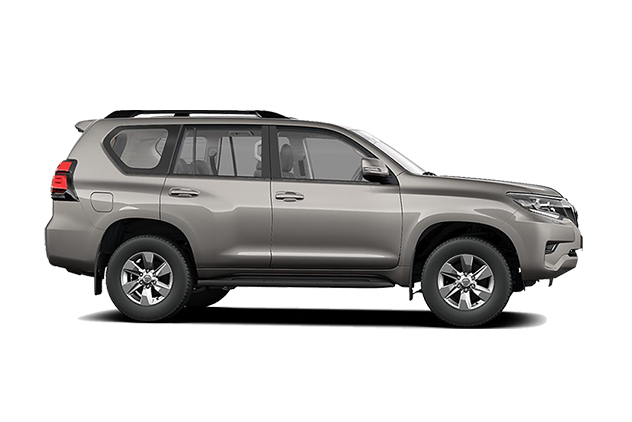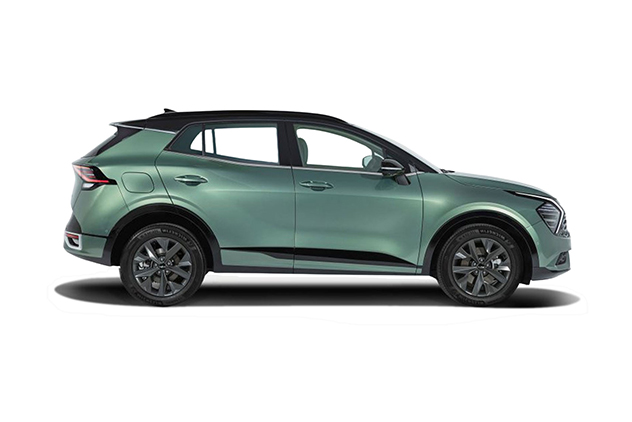Iceland’s landscapes are a prime example of how powerful nature can be, sculpted over thousands of years by glacial and volcanic activity. Beyond the iconic Iceland glaciers and geothermal lagoons lie hidden gems: a network of dramatic canyons.
In this article, we explore the top 9 Iceland canyons, from deep, lengthy crevasses to short, shallow formations, each canyon is entirely unique. Use this guide to head out on your own self-guided adventure with a rental car and add these canyons to your Iceland itinerary.
With options located around the country, it’s easy to seamlessly incorporate them, regardless of how long you have to spend in Iceland.
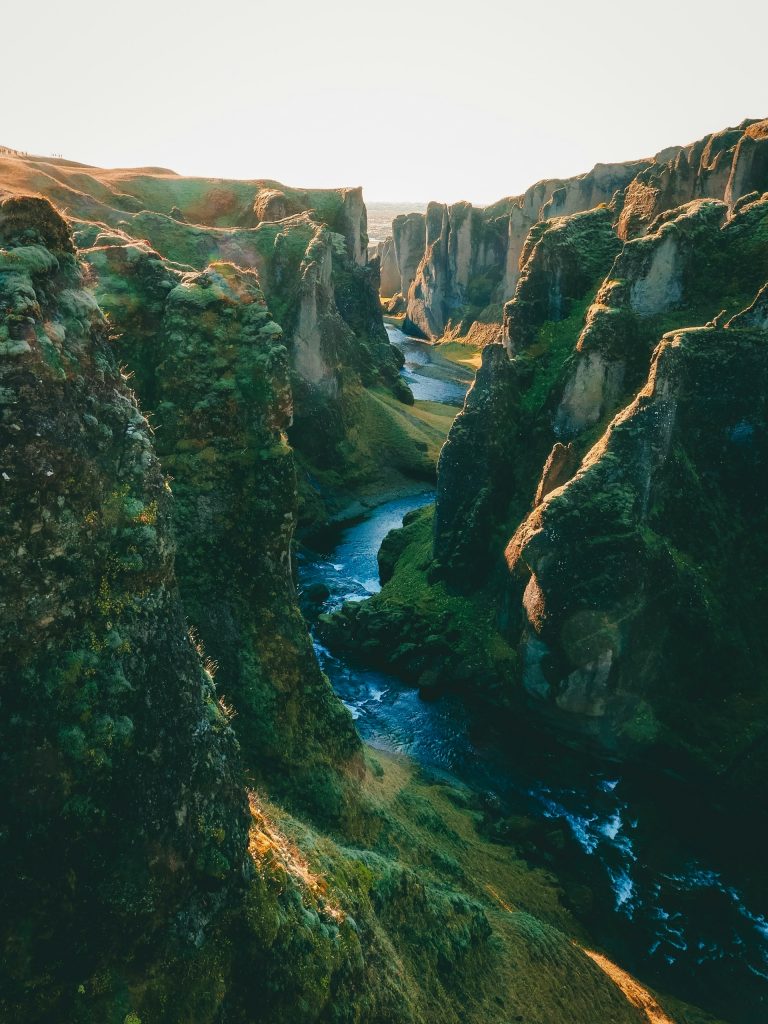
1. Fjadrargljufur canyon in South Iceland
Fjaðrárgljúfur Canyon (Feather River) stretches over 2 kilometers and was formed during the last ice age approximately 9000 years ago. Located near Kirkjubaejarklaustur, the glacial river Fjadra is what makes this canyon truly spectacular. A 1-mile hike to the canyon includes mossy rock fields with observation points that overlook the canyon and its cascading waterfalls.
This canyon was not well known to visitors or even locals prior to the Justin Bieber music video for his song “I’ll Show You,” being partially filmed here.
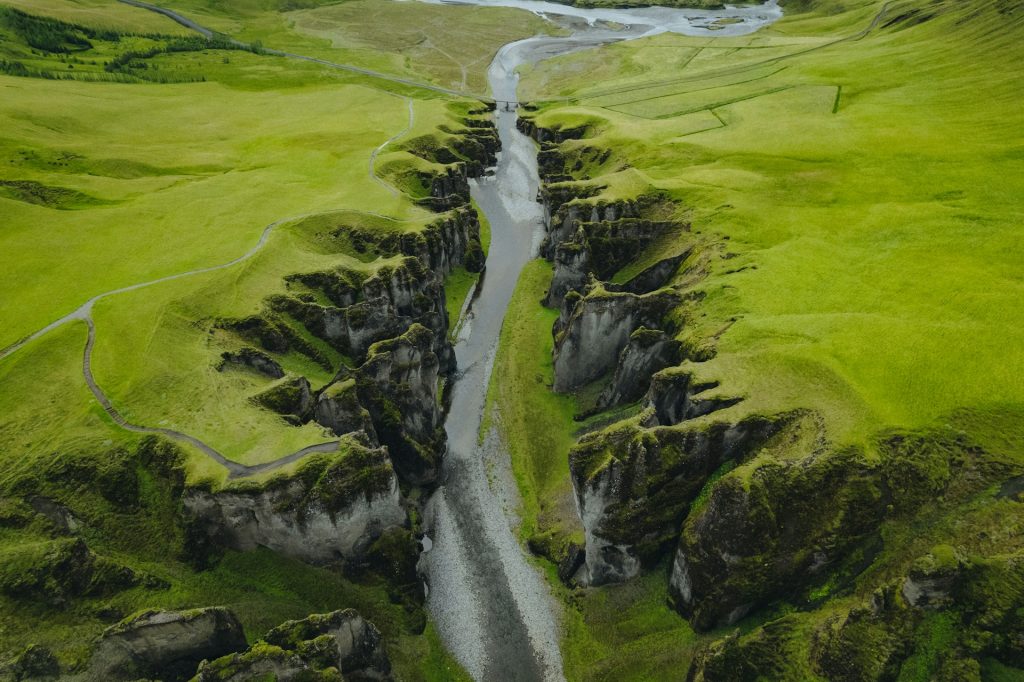
The canyon also served as the backdrop for Jon Snow’s first dragon flight in the Game of Thrones. Since then, Fjaðrárgljúfur has faced some challenges, requiring temporary closures to protect its delicate vegetation from the impact of increased visitors, so it’s important to be mindful when visiting and stick to marked trails.
Fjaðrárgljúfur Canyon is accessible year-round with most vehicles, as it’s only located 3 kilometers off the main Route 1 Ring Road, and there are 2 different parking lots where you can park before the short hike to the canyon. Consideration of factors such as group size and time of year when choosing your rental vehicle will give you the best experience exploring Fjaðrárgljúfur Canyon’s pristine views.
Route from Reykjavik to Fjadrargljufur canyon in Iceland
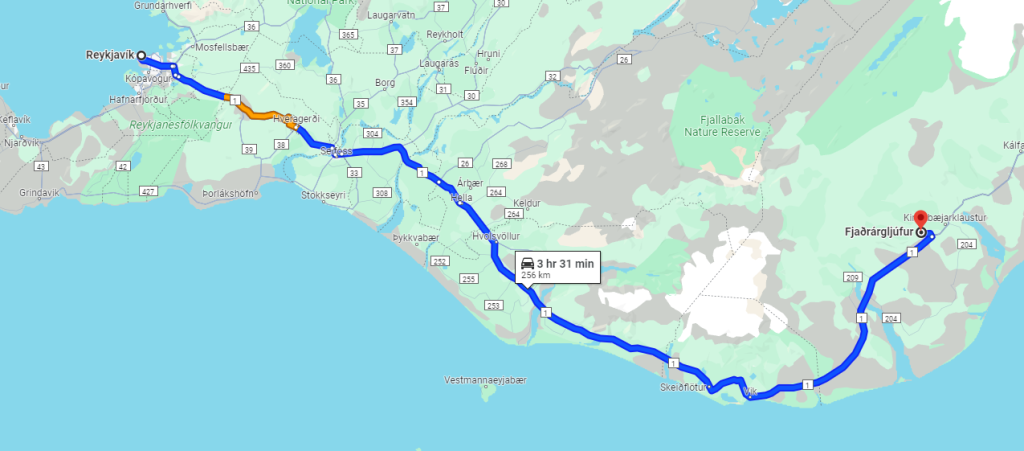
2. The Basalt Canyon: Studlagil in East Iceland
Located within the glacier valley of Jokuldalur, this canyon includes the largest number of basalt rock columns with a striking blue-green glacial river.
The area is sparsely inhabited, mainly just by Icelandic sheep. The area’s transformation began in 2009 with the Karahnjukavirkjun hydroelectric plant, leading to the formation of Hálslón, a vast reservoir that helped control the water levels. This project powers the aluminum plant in Reydarfjordur.
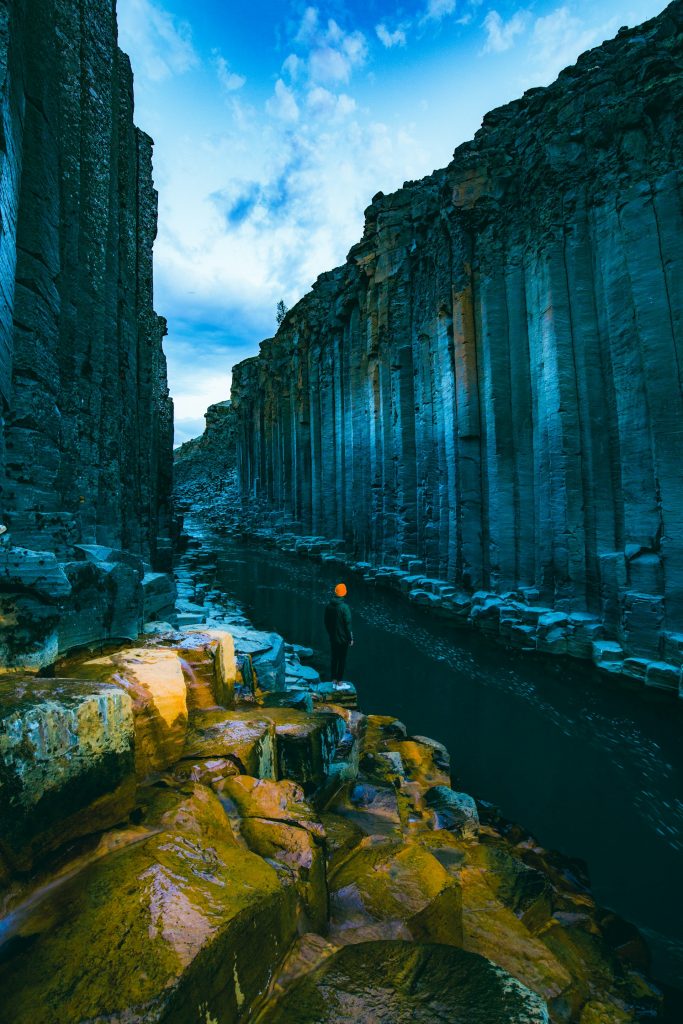
Now, this canyon attracts both travelers and locals and is accessible year-round with the best views being in the summer and autumn. Caution is advised due to the terrain, and a good pair of sturdy hiking boots are highly recommended. The water’s hues change seasonally, with a blue-green tone in spring and early summer, and a light grey in late summer.
Winter offers a chance to witness the northern lights in Iceland, while summer provides the midnight sun during late-evening visits. Exploring with a 4X4 vehicle is ideal to get as close to the canyon as possible. It is recommended to use parking lots and take the 1-hour hike to the canyon each way, which ensures a safer and more rewarding experience within the untouched Icelandic terrain.
Route from Reykjavik to Studlagil Canyon
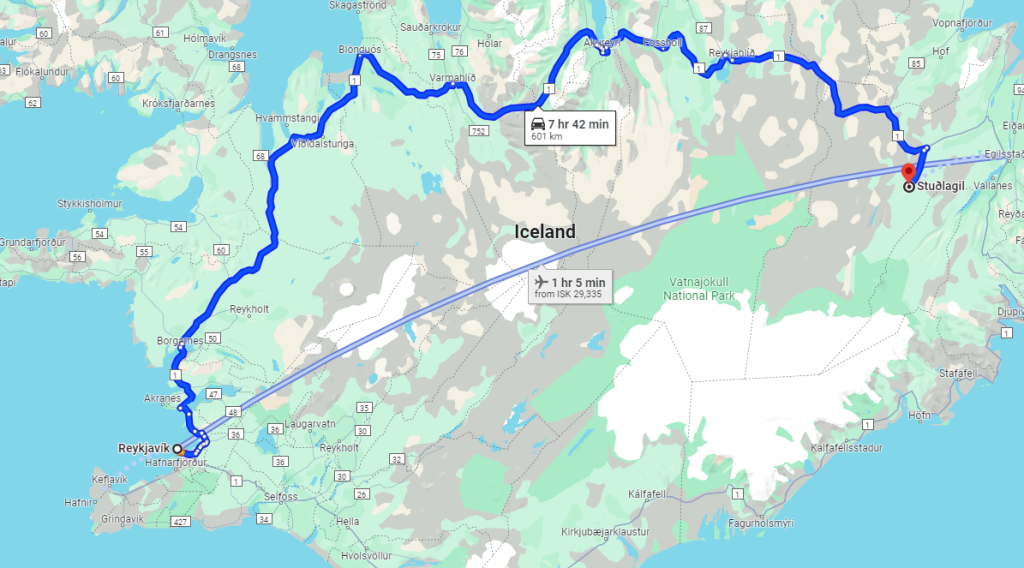
3. Mulagljufur canyon in Southeast Iceland
Múlagljúfur Canyon (Mules Canyon) offers a fantastic hiking trail where visitors have the opportunity to see both the Hangandifoss and Múlafoss waterfalls. This canyon has also been relatively undiscovered until recently, despite its proximity to the Ring Road.
t’s located only minutes south of the Jokulsarlon Glacier Lagoon and sits on the south tip of Vatnajokull National Park. Over the last few years, Múlagljúfur Canyon has gained popularity, becoming a hiking hotspot, especially during the summer. Reaching the trail requires some careful driving on a bumpy gravel road, so you’ll want to have a 4X4 SUV to navigate it safely.
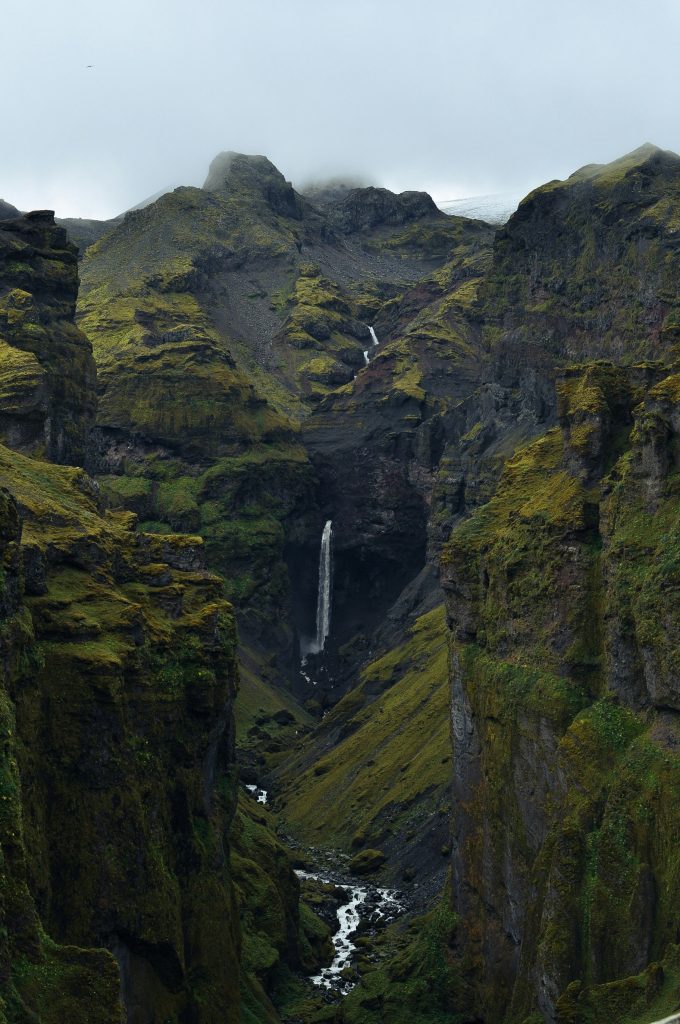
The highlight of the area is at its highest point, where visitors will get a breathtaking view of the narrow canyon, towering mountain tops, and glaciers. The 6.4-kilometer round-trip hike reaches approximately 440 meters in elevation, and hikers can even enjoy wild blueberries and crowberries along the path when visiting in summer.
Experiencing the solitude of Múlagljúfur Canyon is something you shouldn’t miss out on when visiting Iceland. Because it’s not on a main road, it’s worth noting that this track might not be in the best condition, so it’s highly recommended to have an SUV or a 4×4 vehicle as you explore the area.
Route from Reykjavik to Mulagljufur canyon
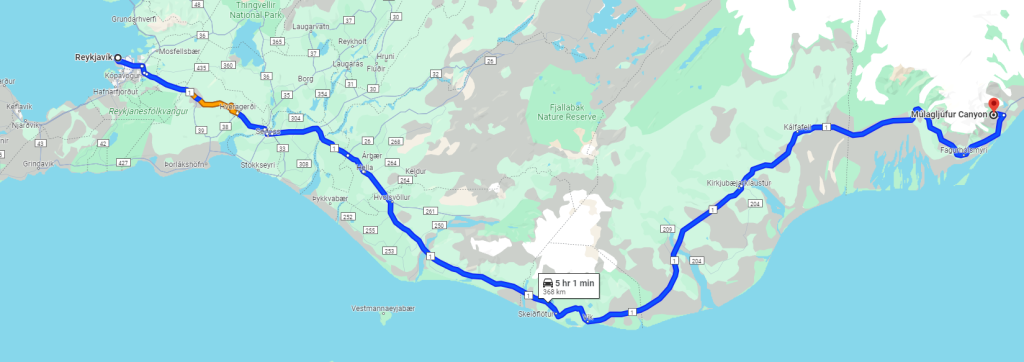
4. Sigoldugljufur Canyon in Southern Highlands
Sigöldugljúfur Canyon is also known as the Valley of Tears due to the large number of Iceland waterfalls that fall over its cliffs. The region is very remote, and features bright blue waters against the lava landscapes of the Icelandic Highlands and is a popular stop on the Sigalda track to Iceland’s famed geological Landmannalaugar.
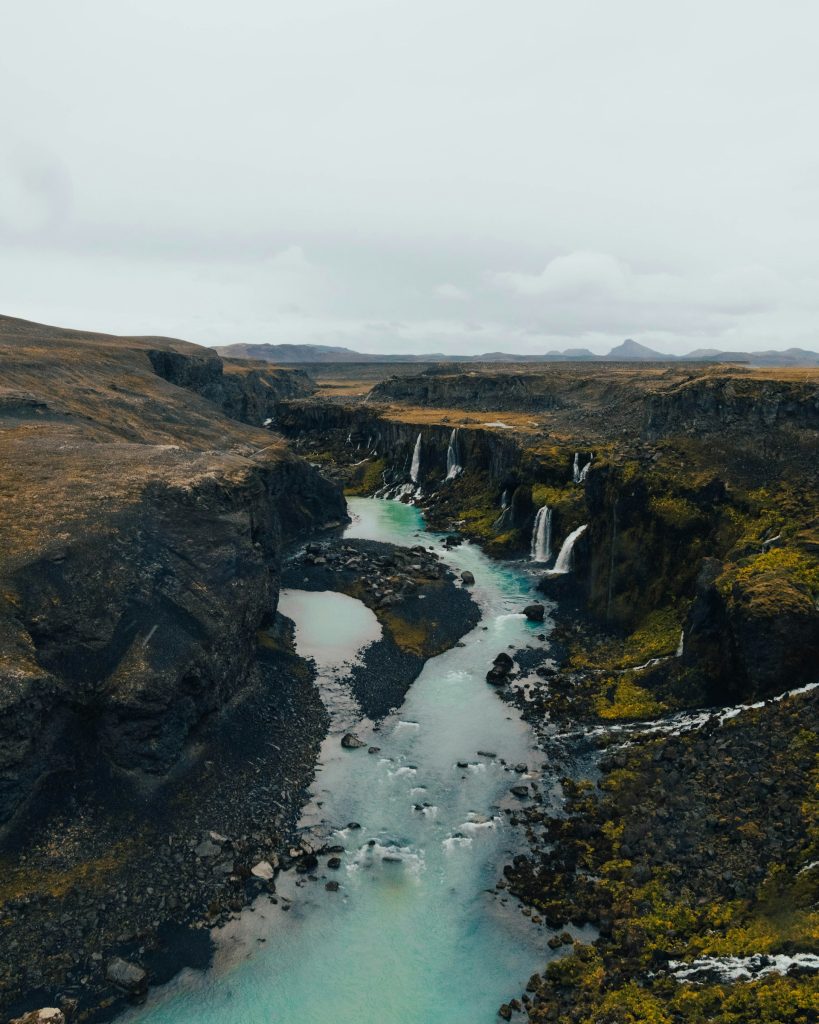
Sigöldugljúfur was originally underwater, submerged by the Tungnaá River until the construction of the Sigalda hydroelectric plant in 1978, and its dam is a few kilometers north. The dam lowered the water level, emptying the canyon, and this is how its many waterfalls appeared, exposing the natural landscape that exists today.
Sigöldugljúfur can only be visited during the summer months from May to October since the roads aren’t paved and are only accessible via F-Roads. Having a 4×4 vehicle is important to safely reach the canyon and also to abide by the laws of driving on F-roads in Iceland. Once you have arrived at the car park, you will need sturdy hiking boots to hike over uneven ground and reach the valley.
The location of Sigöldugljúfur Canyon in Iceland
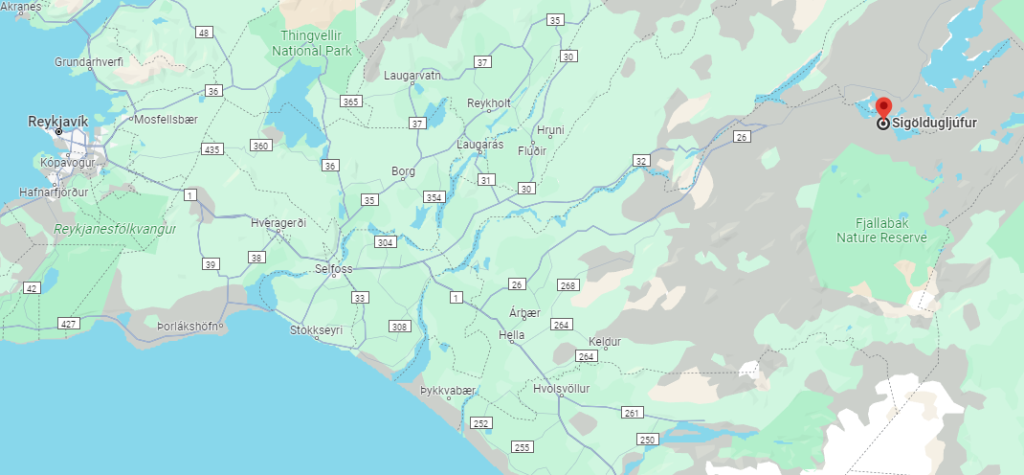
5. Glymur Canyon in West Iceland
Glymur Canyon, just outside the Iceland capital Reykjavik, makes for a great day trip when you’re short on time, such as on an Iceland stopover trip. Situated at the end of a long fjord, the canyon features the impressive Glymur waterfall, which is the country’s second tallest. The powerful, rushing water of the waterfall is what originally created the canyon, forming a striking landscape of cliffs, river crossings, and caves.
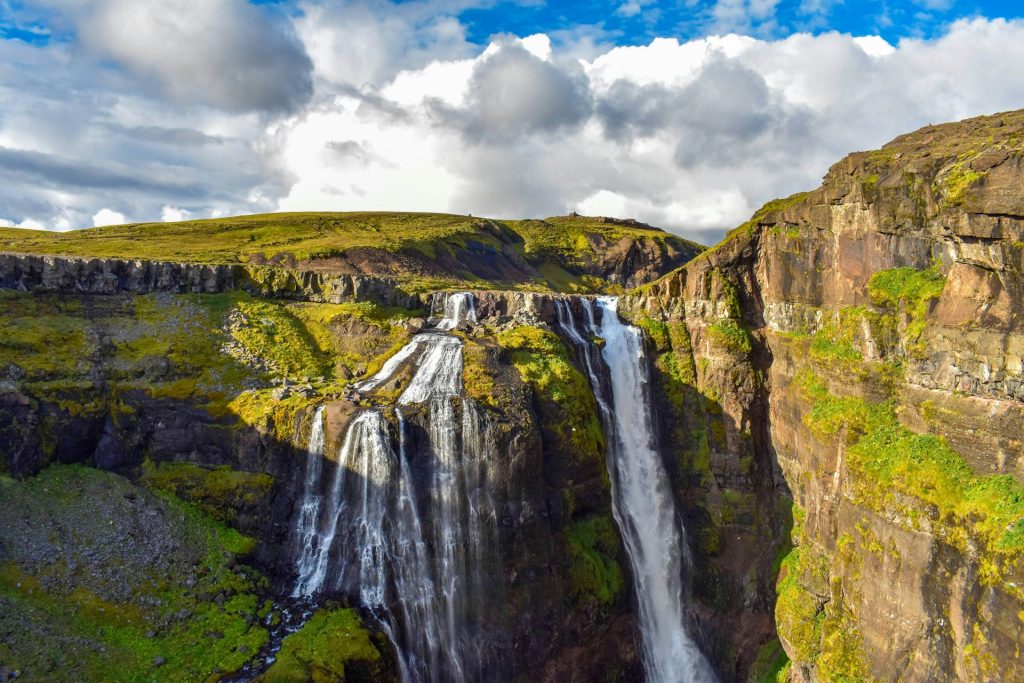
The canyon is only accessible by a 3 to 4-hour hike, which is uphill on the way in and downhill on the way out. In total, the entire hike is about 7.5 kilometers (4.7 miles) round trip.
The best time to visit Glymur Canyon is in the summer, from June to August when remote areas like this are more accessible. Additionally, the summer brings lush vegetation that clings to the cliffs, contrasting against the dark volcanic rock of the canyon. The hike to the canyon and waterfall requires sturdy footwear, and renting a 4×4 vehicle is recommended to safely travel the gravel road to the canyon’s parking lot in Botnsa.
Route from Reykjavik to Glymur Canyon
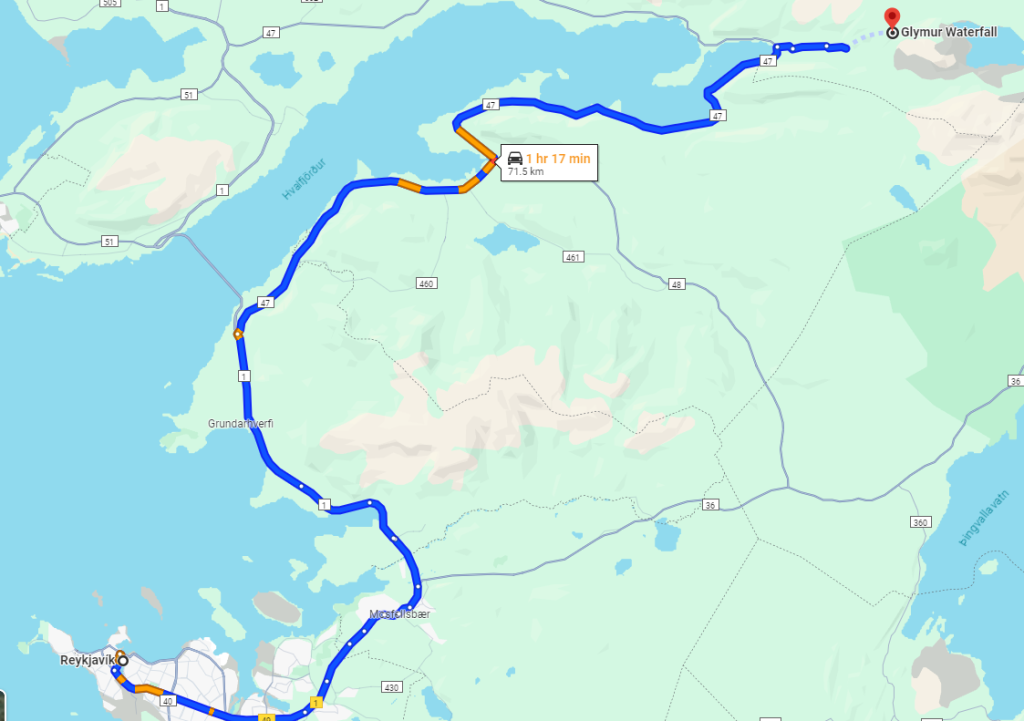
6. Asbyrgi Canyon in North Iceland
Located approximately 541 kilometers (336 miles) northeast of Reykjavík, Ásbyrgi Canyon is a horseshoe-shaped glacial canyon 3.5 kilometers (2.1 miles) in length. Surrounded by cliffs that reach up to 90 meters (295 feet), Ásbyrgi has a massive crag named Eyjan, also known as “the Island,” positioned at its open end. The origin of Asbyrgi was likely caused by significant glacial flooding in the river Jökulsá thousands of years ago, but it still isn’t known for sure.
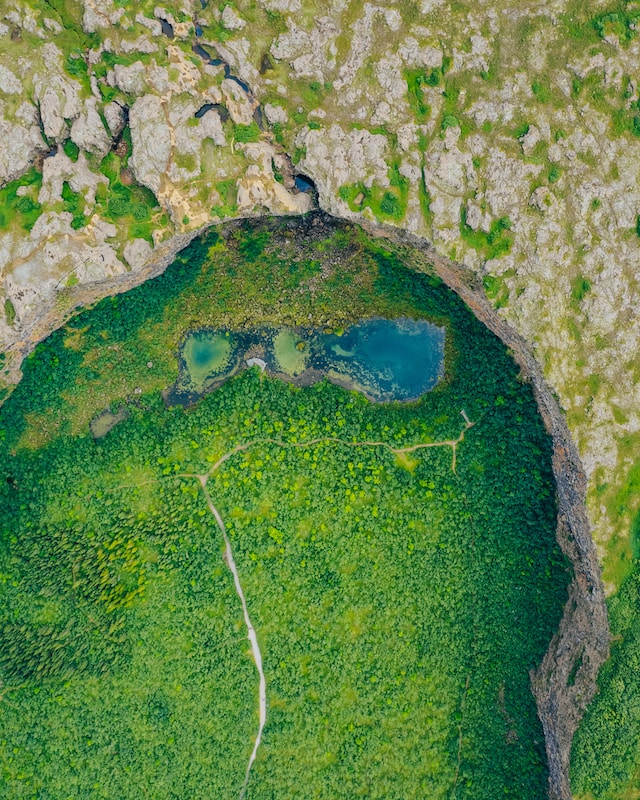
Inside the canyon, you’ll find a small lake called Botnstjörn, where Eurasian wigeon and Northern fulmars birds nest. Ásbyrgi is also thought by many to be the capital of “the hidden people,” or the elves, in Iceland.
Although it may be accessible all year, the best time to explore Ásbyrgi is in the summer months, as the gravel road might be closed due to bad weather in Iceland during winter. Even during the summer, your safest choice of rental vehicle would be high chassis, full size cars, and 4X4s due to the gravel roads you must travel to reach Asbyrgi Canyon.
Route from Reykjavik to Ásbyrgi canyon

7. Stakkholtsgja Canyon: Thorsmork Area of Highlands
Stakkholtsgjá, an impressive canyon in the Highlands of South Iceland, fascinates visitors with its hiking trail that finishes at a grand waterfall. The canyon, which is approximately one hundred meters deep, has high cliffs with caves, narrow ravines, and rock shelves covered with vegetation.
We recommend stopping at Stakkholtsgjá on the way to Thorsmork Nature Reserve, as it’s definitely a highlight of the region. The hike takes around 1.5 to 2 hours round trip and is well worth the trek.
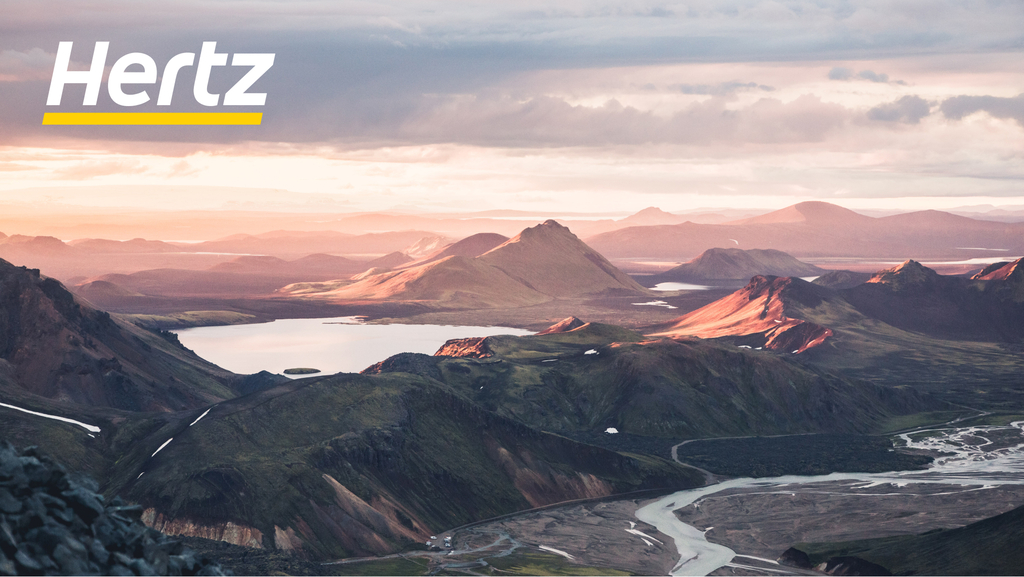
Stakkholtsgjá is only accessible during the summer months. Since you will need to take F-roads in Iceland while traveling to Stakkholtsgjá Canyon, this trip will require a 4×4, high chassis or Jeep-style rental vehicle to safely navigate the gravel road, which does include a few Iceland river crossings. Once you cross the two-kilometer-long canyon, you’ll encounter many small streams and mossy rocks, so take care to avoid slipping.
Route from Reykjavik to Stakkholtsgja Canyon
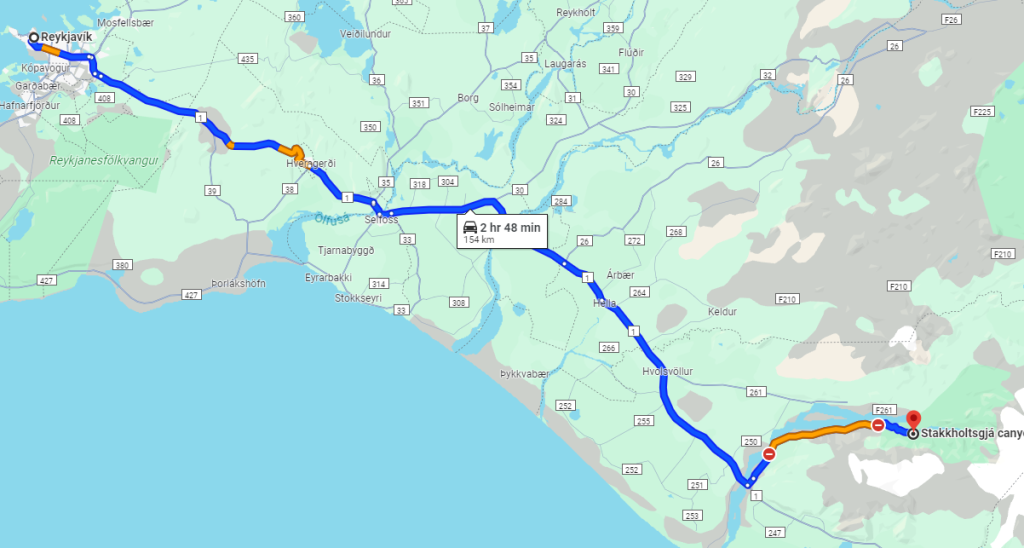
8. Almannagja at Thingvellir National Park
Almannagjá Gorge is a well-known geological area that lies at the tip of the tectonic plates of North America and Europe within the Thingvellir National Park, that you can access during your Golden Circle tour. It’s just a short drive of 45 minutes (50 kilometers) from Reykjavík.
This narrow valley, part of the North Atlantic rift system, stretches from Iceland all the way to the South Pole. The gorge, which is 8 kilometers (5 miles), offers a hiking challenge with a rewarding view of the Öxarárfoss waterfall at the end.
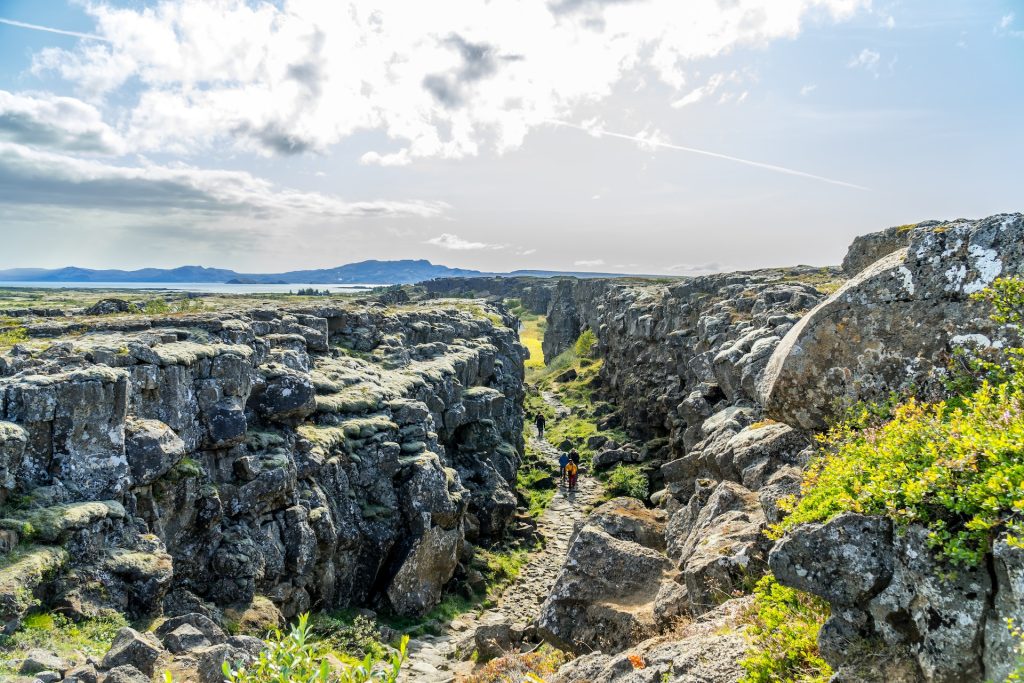
Geological studies reveal that the North American tectonic plates pulled west, leading to the formation of Almannagjá when the edge broke free during an earthquake.
The canyon exposes the raw edges of both the North American and Eurasian plates in a unique phenomenon that you won’t witness anywhere else. Almannagjá and Thingvellir National Park also have deep historical and cultural significance, having the world’s longest-running assembly/parliament.
While open and easily accessible year-round, the best time to visit is between May and October for favorable weather. Opting for a 4×4, Jeep, or SUV rental vehicle allows for unexpected stops and exploration along the way.
Route from Reykjavik to Almannagja
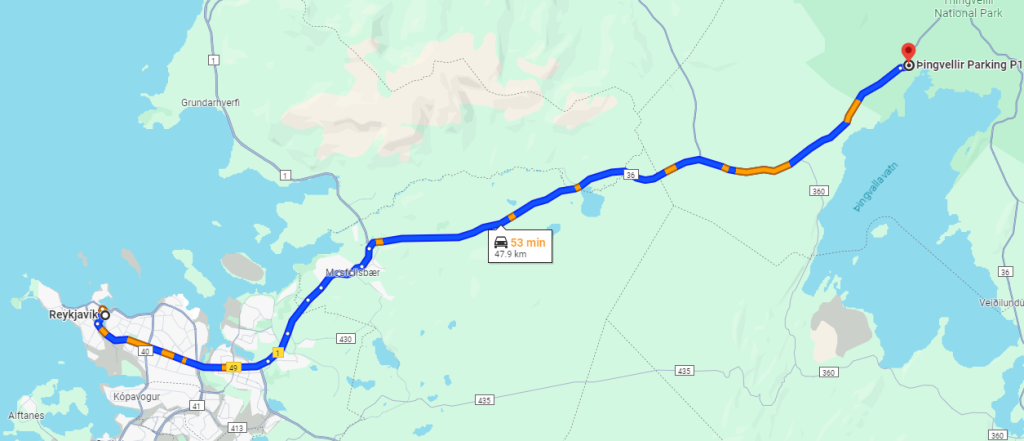
9. Jokulsargljufur Canyon in North Iceland
Jokulsargljufur Canyon stretches 25 kilometers (15.5 miles) in length, 500 meters (1640 feet) in width, and reaches depths of 100-120 meters (328-393 feet), making it one of the country’s deepest and most breathtaking canyons.
Carved by the glacial mountain river Jökulsá á Fjöllum, the canyon has many stunning waterfalls, including Selfoss, Dettifoss, Hafragilsfoss, and Rettarfoss. Jokulsargljufur was shaped by the forces of water, fire, and ice as massive glacial bursts, deemed catastrophic, are thought to have sculpted the deep ravines and rocky basins.
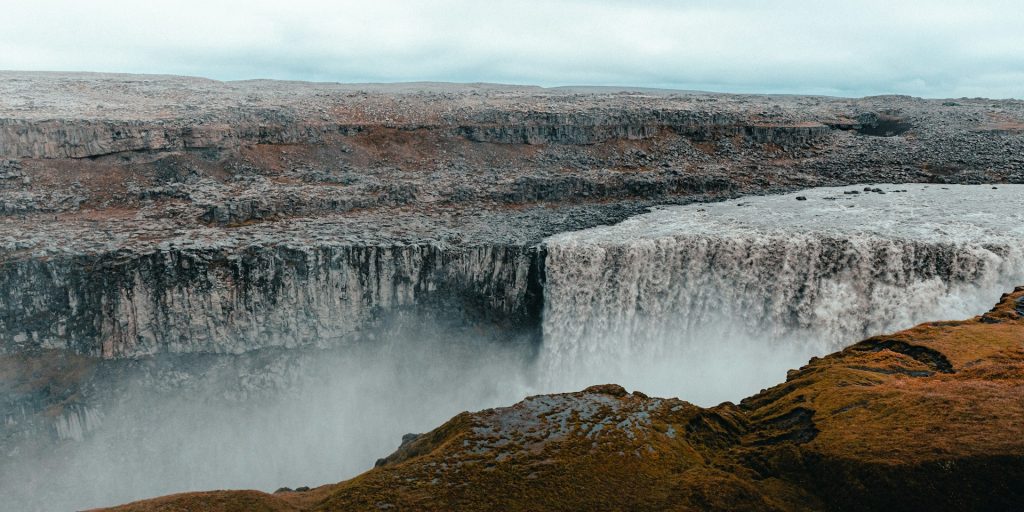
While accessible all year round, it is recommended to visit this canyon during the summer season, as winter conditions can lead to minimal services and challenging road closures due to harsh weather.
To navigate the rugged roads through Jokulsargljufur, a 4×4 vehicle is recommended, which allows you to explore the canyon’s wonders with ease and comfort, although a smaller 2WD car would be suitable if you are traveling during the summer months in Iceland.
Route from Reykjavik to Jokulsargljufur Canyon
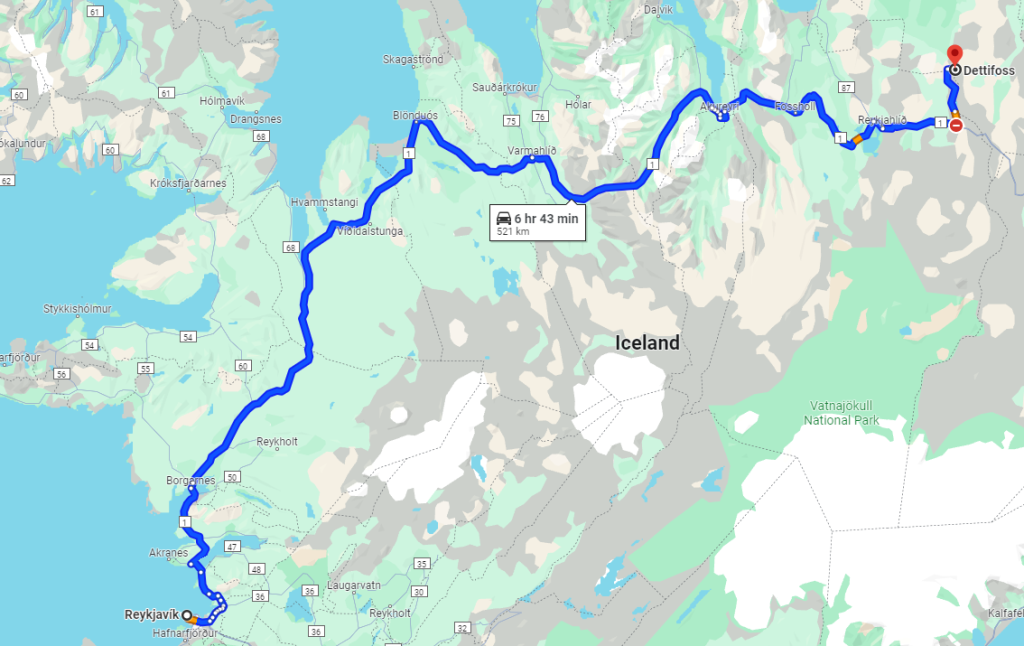
Safety Tips When Visiting the Canyons in Iceland
When exploring the canyons in Iceland, prioritizing safety is paramount. Here are a few extra safety tips to keep in mind when visiting the canyons in Iceland:
- Select a suitable vehicle tailored to the demands of your journey and the season, with winter travels calling for the reliability of a 4×4 vehicle. Factor in group size and luggage requirements when choosing your rental vehicle as well.
- Stay vigilant by regularly checking road (road.is) and weather (vedur.is) conditions to ensure a smooth and secure travel experience.
- When near the canyons, exercise caution by refraining from approaching the edges, as the terrain can be unpredictable.
- Dress appropriately for the Icelandic climate by layering up and having sturdy hiking boots to navigate uneven paths with confidence. Check out our Iceland packing list for a full breakdown of what to bring.
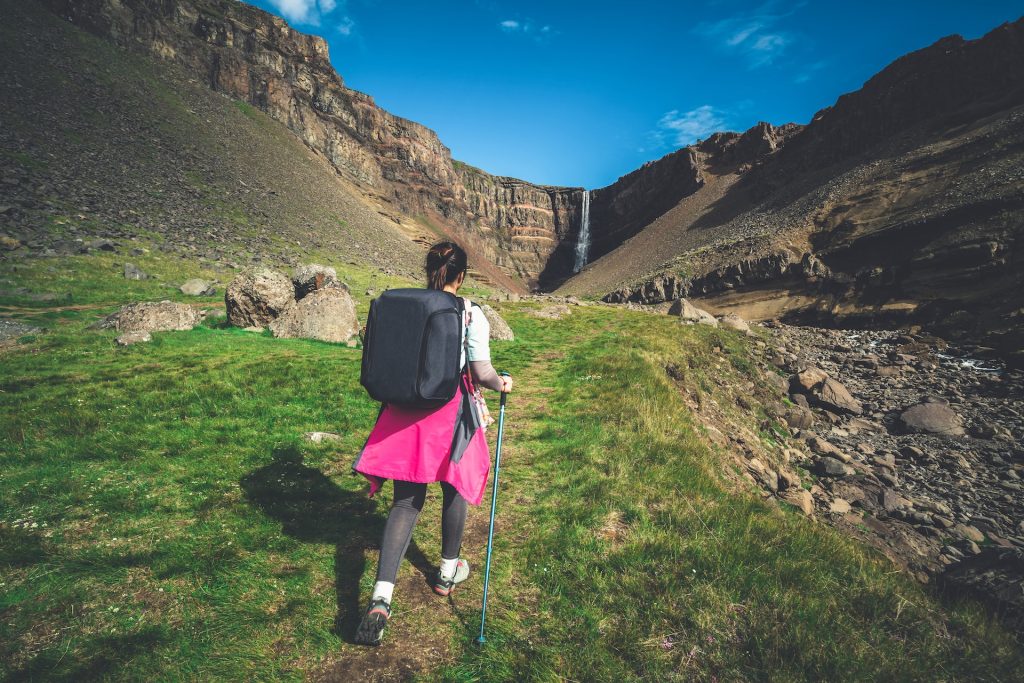
Explore the Top Iceland Canyons With a Rental Car
For adventurous travelers wanting to get off the beaten path and explore some of Iceland’s most untouched landscapes, visiting these Iceland canyons is a must. With many of the canyons located in remote areas, there are fewer tourists to compete with, and more of the jaw-dropping nature that Iceland is known for.
To fully enjoy and discover these canyons, a self-guided itinerary with a rental car is a non-negotiable. Not only will it allow you to access the remote canyons, but it will also give you the flexibility to visit other Iceland attractions at your own pace.
Book your vehicle online with Hertz to ensure the freedom to explore each canyon at your own pace and enjoy the breathtaking landscapes of Iceland’s canyons.
